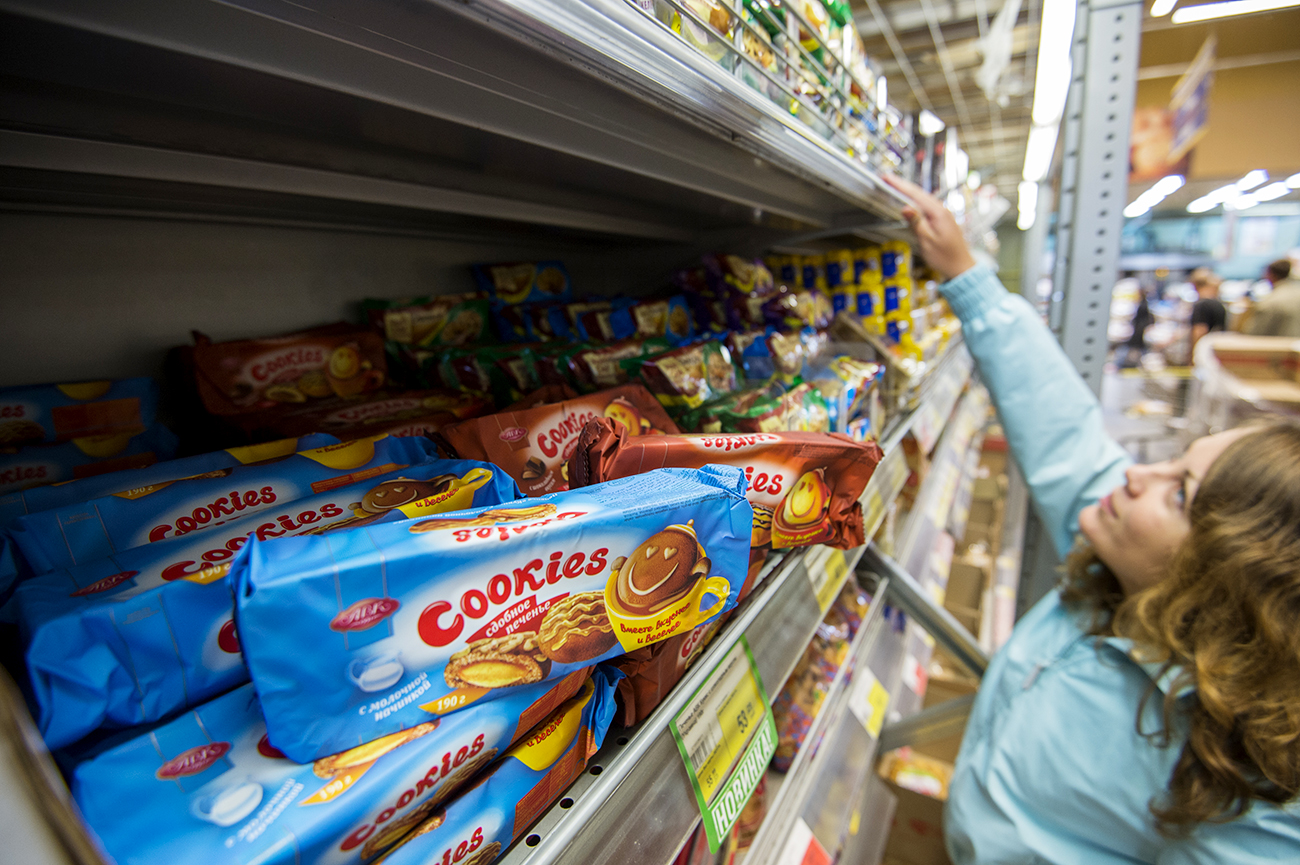Russians to spend about $20 million on candies for Valentine’s Day

In 2016, Russian confectionery sales dropped 2.4 percent by volume, according to the Nielsen research company.
Alexey Malgavko/RIA NovostiRussians are expected to spend up to $20 million on candies for Valentine’s Day gifts this year, reported the Confectionery Market Research Center.
“This will amount to 4-5 percent of the average consumption of confectionery products in February, or 10-12,000 tons of confectionery products," the report said. About 70 percent of Valentine’s Day-themed candies are imported confectionery products. Few Russian candy makers offer such specialized holiday items.
Russiansloosing their sweet tooth?
In 2016, Russian confectionery sales dropped 2.4 percent by volume, according to the Nielsen research company. In monetary terms sales grew, though when compared with the previous year the growth rate slowed by half: 8.2 percent in 2016, compared to 17.8 percent in 2015.
"The reasons for the downturn on the confectionery market are economic difficulties, the rise in confectionery prices after the ruble devaluation, and falling consumer incomes," said a spokesperson for Mondelez Rus, a leader on the Russian confectionery market. The company attributes the decline in candy consumption to consumers cutting costs and becoming more careful about spending.
In some categories sales decreased, said Elizaveta Nikitina, the executive director of the Confectionery Market Research Center. This is true for certain types of chocolates and chocolate candies, cakes, pastries and other products. Consumer demand has shifted towards cheaper products.
Exports rise
Despite falling sales, confectionery production in Russia last year increased 2 percent, said Vyacheslav Lashmankin, executive director of the Askond association of confectionery industry companies. One of the factors was the increase in Russian candy exports.
“Chocolate supplies to our traditional EAEU markets dropped, but exports to non-CIS countries increased by 65.5 percent," Lashmankin said.
According to the Confectionery Market Research Center, in 2016 candy sales dropped to their lowest since 2013, but in November-December last year demand recovered.
"An improvement in demand is expected in 2017, primarily because consumers are tired of pinching pennies," Nikitina said. "Candies are the so-called ‘affordable luxury’ that most Russian consumers will spend on."
Read more: How to make a fortune from banned food products
If using any of Russia Beyond's content, partly or in full, always provide an active hyperlink to the original material.
Subscribe
to our newsletter!
Get the week's best stories straight to your inbox